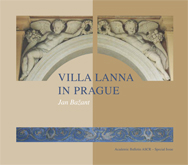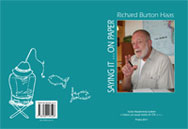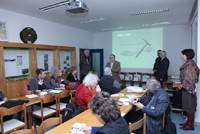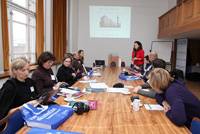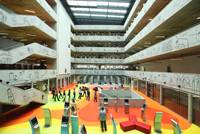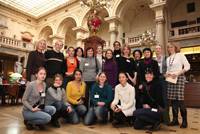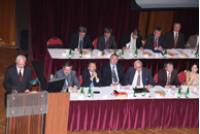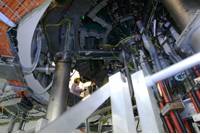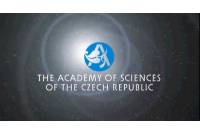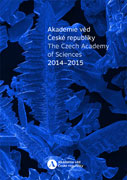 The Czech Academy of Sciences has issued a report accounting selected research results achieved by its scientific institutes in all research areas in 2014 and in early 2015. It outlines its research activities, as well as goals of the new research centres and facilities of the CAS and its new Strategy AV21, the main aim of which is to perform top level multilateral interdisciplinary research reflecting the needs of contemporary society. The book (printed version in PDF) documents the CAS´s efforts to transfer research findings into practical outputs and its co-operation with partners in the industrial sphere, it presents the CAS´s co-operation with various institutions on international, regional and local levels and mentions some of the major social events and anniversaries marked by the CAS in 2014 and 2015.
The Czech Academy of Sciences has issued a report accounting selected research results achieved by its scientific institutes in all research areas in 2014 and in early 2015. It outlines its research activities, as well as goals of the new research centres and facilities of the CAS and its new Strategy AV21, the main aim of which is to perform top level multilateral interdisciplinary research reflecting the needs of contemporary society. The book (printed version in PDF) documents the CAS´s efforts to transfer research findings into practical outputs and its co-operation with partners in the industrial sphere, it presents the CAS´s co-operation with various institutions on international, regional and local levels and mentions some of the major social events and anniversaries marked by the CAS in 2014 and 2015.
Table of contents:
Address of the CAS President Jiří Drahoš
The Czech Academy of Sciences in 2014: Facts and Figures
Selected Research Results
I. Mathematics, Physics and Earth Sciences
- Mathematics, Physics and Computer Science
- Applied Physics
- Earth Sciences
II: Life and Chemical Sciences
- Chemical Sciences
- Biological and Medical Sciences
- Biological-Ecological Sciences
III. Humanities and Social Sciences
- Social and Economic Sciences
- History Sciences
- Humanities and Philology
New Research Centres and Facilities
Science for Practical Applications
Published Books
The Academy as a Partner
Awards and Medals
Supporting Young Scientists and Equal Opportunities
Science and the Public
- Science Communication
- Science and the Arts
The CAS in 2015
- Strategy AV 21
- The CAS in 2015 – Science and Research
- The CAS in 2015 – Topical Events
ADDRESS OF THE CAS PRESIDENT JIŘÍ DRAHOŠ

Photo: Stanislava Kyselová, Akademický bulletin
The Czech Academy of Sciences has introduced its new Strategy AV21 with the aim of
presenting itself even more distinctly as an institution conducting high quality research focused
on challenges facing the whole of Society at present. The motto of the new strategy is “Top
Research in the public interest”.
The point of the new strategy of the Academy of Sciences lies in creating a system framework
for what has already existed to a considerable extent – that is interdisciplinary research.
Moreover, the new strategy aims at boosting inter-institutional synergy not only inside the Academy
but also through cooperation with universities, technical institutes, business organizations and
the state administration. In this connection, I would like to emphasize that the system of the
Academy of Sciences and its research institutes facilitates conceptual and efficient work while
being flexible enough to allow research teams to respond both to world developments in a particular
research area and to the demands of society. I am even convinced that the very flexibility of
non-university research will become one of the significant competitive advantages of the Czech
Republic in the future. The research institutes of the Academy of Sciences are strongly interlinked
with education; in comparison with universities or other higher education institutions, they also
have indispensable prerequisites and even an obligation to concentrate primarily on solving highly
specialized or extensive interdisciplinary projects requiring costly infrastructure and the
long-term concentration of capacities. Topics such as the future of energy in the Czech Republic,
public health or the quality of public policies constitute complex sets of problems the solution of
which requires broad-based interdisciplinary research. It is this very type of research that will
grow at the Academy of Sciences under the new strategy.
What instigated the Strategy AV21?
Despite the fact that the Academy of Sciences is an institution of top--level fundamental
research, we consider it important to increasingly serve public interests for the benefit of
society. That means to respond to the important challenges of our times thus demonstrating that
basic research is essential for the development of knowledge and at the same time it is a driving
force for genuine innovation in many areas of human activities. Strategy AV21 is a part of our new
concept where basic research remains a primary and typical activity of the Academy of Sciences and
yet strongly accents the strategic orientation of its results to economically and socially
important areas, be they industry or state administration. This is the meaning of the new strategy
and its current interdisciplinary research programmes.
Fourteen research programmes have been formulated so far. Who can engage in them?
The programme framework for the Strategy in the form of fourteen research programmes was
completed at the end of the year 2014 on the understanding that even new programmes could be
proposed in the future. We expect the implementation of the Strategy 21 programmes to boost a more
effective transfer of research findings into practical outputs and to the spheres of education and
state administration thanks to the direct involvement of our partners at universities, technical
institutions, the business sector and state administration. I believe that our existing cooperation
will thus receive a new impulse, which will boost both particular projects of the cooperation
between academic and business spheres and the emergence of scientifically based data for political
decision-making. I would like to underline that we are ready for discussion concerning possible new
forms of cooperation that the Strategy offers.
The motto of the Strategy, “Top research in the public interest”, suggests its direction
towards research reflecting topical needs of society. What is the anticipated output and when do
you expect the first results to appear?
Typical categories of the output will be specialized publications, studies, surveys,
analyses, expert opinions and industrially applicable results. The research programmes will also
bring further partial results in the forms of scientific debates, specialized and popularized
lectures, or public discussions. Research programmes of the Academy of Sciences are to be regularly
evaluated and, if necessary, subsequently rearranged on the basis of obtained results. Moreover, it
will also be possible to propose new programmes drawn from the latest knowledge. Generally spoken,
the coordinators of all the fourteen programmes are not bound by a strict time plan, but in about a
year’s time we will examine how the particular programme works and what it can yield in the near
future. The programmes that will not show relevant scientific quality and socially pertinent
results will be discussed with their coordinators and either revised or terminated.
Prof. Ing. Jiři Drahoš, DrSc., dr. h. c.
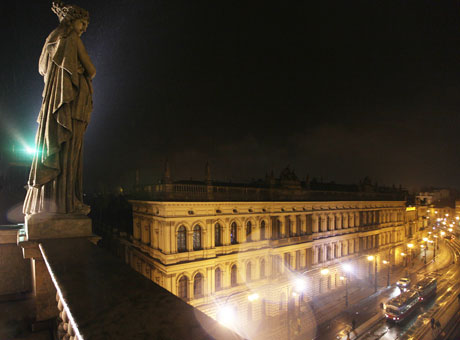
Photo: Stanislava Kyselová, Akademický bulletin
THE CZECH ACADEMY OF SCIENCES IN 2014
FACTS AND FIGURES
The Czech Academy of Sciences is a public non-university research institution comprising a system of scientific institutes, the main mission of which is to conduct research in a broad range of sciences and humanities (from mathematics and physics through technical, chemical, biological, medical and Earth sciences to history and philosophy), to contribute to the advancement of knowledge and education as well as to promote the transfer of new findings into practical uses.
In 2014, the CAS and its institutes managed a total of 13,460 million CZK of which 33 % came from its own allocation of the state budget. 17 % of the CAS financial resources were granted from other state budget allocations in the form of special-purpose support for 1,590 specific research projects, a further 20 % came from Operational programmes financed from EU structural funds – in 2014 the institutes of the CAS participated in implementing 1,260 such projects – and the final 30 % of the total CAS resources stemmed from its own economic activities, including the sale of licenses, publications and services etc.
The total number of employees of the CAS amounted to 8,505 in 2014, out of which 4,935 were
university-educated research workers who had passed the required certification. The average monthly
income at the CAS was 36,155 CZK, which is a 2.3 % increase compared with 2013.
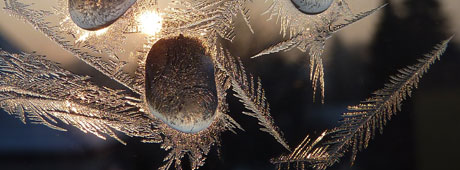
Photo: Pavel Řehák, Institute of Mathematics
SELECTED RESEARCH RESULTS
The Czech Academy of Sciences consists of 54 public research institutes divided into three
research areas: the first includes mathematics, physics and earth sciences, the second one covers
life and chemical sciences and the third deals with humanities and social sciences.
I. MATHEMATICS, PHYSICS AND EARTH SCIENCES
Mathematics, Physics and Computer Science
Astronomical Institute of the CAS –
http://www.asu.cas.cz/
Institute of Physics of the CAS –
http://fzu.cz/
Institute of Mathematics of the CAS –
http://www.math.cas.cz/
Institute of Computer Science of the CAS –
http://www.ustavinformatiky.cz/
Nuclear Physics Institute of the CAS –
http://www.ujf.cas.cz/
Institute of Information Theory and Automation of the CAS –
http://www.utia.cas.cz/
Research in the fields of mathematics, physics and computer science studies basic laws from the micro world of elementary particles to the breadth of the entire universe, from the behaviour of physical systems in both normal and extreme conditions, from processes and interactions in complex systems, such as the human brain or climate and ecology, to artificial intelligence. Scientists study the properties of materials exposed to high pressures, ultra-low temperatures and strong magnetic fields. They explore nanomaterials, super/para/magnetic nanoparticles, nanoelectronics and spintronics, nanoelectronics and nanoelectromechanical systems. Nuclear physics develops new diagnostic and therapeutic methods and so on.
In 2014, astronomers from the
Astronomical Institute of the CAS used newly developed approaches and mathematical
methods to re-analyse instrumental observations of the Benešov bolide of 7 May 1991 and to predict
a revised impact location. Following on that, four small meteorites – fragments of the Benešov body
– were found in the newly predicted area. Moreover, further analyses of the texture, chemical, and
mineralogical composition of the recovered fragments, performed in co-operation with experts from
other institutions, surprisingly revealed that the Benešov body consisted of at least three
different types of material.
Pavel Spurný, Jakub Haloda, Jiří Borovička, Lukáš Shrbený and Patricie Halodová: Reanalysis of
the Benesov bolide and recovery of polymict breccia meteorites - old mystery solved after 20 years,
A&A 570 (2014) A39.
http://www.aanda.org/articles/aa/abs/2014/10/aa24308-14/aa24308-14.html

Photo: Pavel Spurný,
Astronomical Institute
The first three Benesov meteorites recovered in 2011. From left to right: H5 chondrite 1.56 g ,
7.72 g (with achondritic clast), and LL3.5 chondrite 1.99 g.
The Institute of Physics studied the influence of high gradient magnetic fields on
human leukaemia cells and demonstrated that specific micro-magnet arrays inhibited cell
proliferation and induced apoptosis.
Zablotskii V, Syrovets T, Schmidt ZW, Dejneka A, Simmet T: Modulation of monocytic leukemia
cell function and survival by high gradient magnetic fields and mathematical modeling studies.
Biomaterials. 2014 Mar;35(10):3164-71.
http://www.ncbi.nlm.nih.gov/pubmed/24439412
Physicists from the
Institute of Physics also introduced a new way of explaining the formation of
polycyclic aromatic hydrocarbons and their abundance in interstellar space. According to this new
theory those molecules, which are key to understanding the origin of life in the universe, form in
interstellar space via atomic hydrogen adsorption on the graphite layers covering the surface of
stardust particles, subsequent decomposition of graphene and the final release of polyaromatic
molecules.
P. Merino, M. Švec, J.I. Martinez, P. Jelinek, P. Lacovig, M. Dalmiglio, S. Lizzit, P.
Soukiassian, J. Cernicharo & J.A. Martin-Gago: Graphene etching on SiC grains as a path to
interstellar polycyclic aromatic hydrocarbons formation. Nature Communications 5, Article number:
3054.
http://www.nature.com/ncomms/2014/140121/ncomms4054/full/ncomms4054.html
The
Nuclear Physics Institute investigated the chemical preparation of graphene
materials and their contamination with metallic elements.
C. H. An Wong, Z. Sofer, M. Kubešová, J. Kučera, S. Matějková, M. Pumera: Synthetic routes
contaminate graphene materials with a whole spectrum of unanticipated metallic elements. Proc.
Natl. Acad. Sci. USA, 111 (2014) 13774–13779.
http://www.ncbi.nlm.nih.gov/pubmed/25201990
C. K. Chua, A. Ambrosi, Z. Sofer, A. Macková, V. Havránek, I. Tomandl, M. Pumera: Chemical
Preparation of Graphene Materials Results in Extensive Unintentional Doping with Heteroatoms and
Metals. Chem. Eur. J., 20 (2014) 15760–15767.
http://www.ncbi.nlm.nih.gov/pubmed/25284355
Z. Sofer, O. Jankovský, P. Šimek, K. Klímová, A. Macková, M. Pumera: Uranium- and Thorium-Doped
Graphene for Efficient Oxygen and Hydrogen Peroxide Reduction. ACS Nano 8 (2014) 7106–7114.
http://www.ncbi.nlm.nih.gov/pubmed/24979344
The
Institute of Computer Science developed a system predicting the occupancy of
parking places for commercial vehicles on motorways.
The
Institute of Information Theory and Automation improved one of the imaging methods
used in nuclear medicine – the so-called planar scintigraphy.
Bayesian Blind Separation and Deconvolution of Dynamic Image Sequences Using Sparsity Tichy, O.
Smidl, V.; Priors, IEEE Transactions on Medical Imaging; Volume: 34, Issue:1.
http://www.ieee-tmi.org/
.
Find more about research in this area at:
H. Kurebayashi,, Jairo Sinova, D. Fang, A. C. Irvine, T. D. Skinner, J. Wunderlich,, V. Novák,
R. P. Campion, B. L. Gallagher, E. K. Vehstedt,, L. P. Zârbo, K. Výborný, A. J. Ferguson & T.
Jungwirth: An antidamping spin–orbit torque originating from the Berry curvature. Nature
Nanotechnology 9, 211–217 (2014).
http://www.nature.com/nnano/journal/v9/n3/full/nnano.2014.15.html#close
Milan Paluš: Multiscale Atmospheric Dynamics: Cross-Frequency Phase-Amplitude Coupling in the
Air Temperature. Phys. Rev. Lett. 112, 078702 – Published 21 February 2014.
http://journals.aps.org/prl/abstract/10.1103/PhysRevLett.112.078702
Andrés G. Marrugo, María S. Millán, Michal Šorel, Filip Šroubek: Restoration of retinal images
with space-variant blur; Journal of Biomedical Optics 19(1), 016023 (January 2014).¨
http://library.utia.cas.cz/separaty/2014/ZOI/sorel-0424586.pdf
I. Krausová, R. Cejnar, J. Kučera, P. Dostálek: Impact of the brewing process on the
concentration of silicon in lager beer. J. Inst. Brew. 120 (2014) 433–437.
http://onlinelibrary.wiley.com/doi/10.1002/jib.148/abstract
Applied Physics
Institute of Photonics and Electronics of the CAS –
http://www.ufe.cz/cs
Institute of Physics of Materials of the CAS –
http://www.ipm.cz/
Institute of Plasma Physics of the CAS –
http://ufp.avcr.cz/
Institute of Hydrodynamics of the CAS –
http://www.ih.cas.cz/
Institute of Scientific Instruments of the CAS –
http://www.isibrno.cz/
Institute of Theoretical and Applied Mechanics of the CAS –
http://www.itam.cas.cz/
Institute of Thermomechanics of the CAS –
http://www.it.cas.cz/
Various branches of applied physics deal with photonics, fibre optic lasers, the synthesis and
characterization of nanomaterials. Great attention is paid to novel optical biosensor technologies
for applications in biomolecular research and bio-analytics. Research also focuses on numerous
topics related to plasma, including plasma sources, controlled thermonuclear fusion, or the
interaction of plasma with other states of matter.
Among the investigated topics are relations between the behaviour and properties of materials
and their structural and microstructural characteristics, new concepts of energy conversion,
transmission phenomena in liquid systems and the hydrosphere as well as the biomechanics of the
cardiovascular system. Scientists are also concerned with hydrological modelling of changes in
water resources caused by climate variability and by land use changes.
In 2014, the
Institute of Photonics and Electronics continued in developing very advanced
optical biosensors with surface plasmon resonance used for the rapid and precise detection of
various chemical and biological substances and elements, including pollutants and bacteria. They
succeeded in improving the sensitivity of such biosensors to the extent that they are able to
determine, among other things, very low concentrations of a carcinoembryonic antigen.
The
Institute of Theoretical and Applied Mechanics performed micro tube measurements
and real-time X-ray radiographic imaging to describe fluid penetration processes in porous
Maastricht limestone used in historical buildings and for restoration purposes. Relations between
the speed, depth and volume of the fluid penetration were determined on the basis of the gathered
data. These together with the relevant numerical simulations can help detect and assess damage to
historical buildings.
Koudelka_ml., Petr; Jandejsek, Ivan; Doktor, Tomáš; Kytýř, Daniel; Jiroušek, Ondřej; Zíma,
Pavel; Drdácký, Miloš: Radiographical investigation of fluid penetration processes in natural
stones used in historical buildings. Journal of Instrumentation 2014, roč. 9, č. 5, c05040.
http://iopscience.iop.org/1748-0221/9/05/C05040
The
Institute of Thermomechanics examined the properties of supercooled water, which
is common in clouds, and, as a result, excluded one of its assumed anomalies, namely a dramatic
increase in its surface tension with decreasing temperature. The new experimental data could be
used in applications such as atmospheric modelling.
Hrubý, Jan; Vinš, Václav; Mareš, R; Hykl, Jiří; Kalová, J.: Surface Tension of Supercooled
Water: No Inflection Point down to-25 degrees C.
Journal of Physical Chemistry Letters. Roč. 5, č. 3 (2014), s. 425-428. ISSN 1948-7185
http://pubs.acs.org/doi/abs/10.1021/jz402571a
The Institute of Scientific Instruments presented a new method for very precise scientific measurements and new related complex sensors.
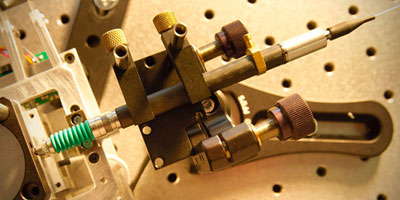
Photo: Archive of Institute of Scientific Instruments
A device using the new method for very precise scientific measurements presented by the
Institute of Scientific Instruments.
Find more about research in this area at:
T. Kruml, K. Obrtlík: Microstructure degradation in high temperature fatigue of TiAl alloy,
Int. J. Fatigue 65 (2014), 28-32.
http://www.sciencedirect.com/science/article/pii/S0142112313002831
P. Beran, M. Petrenec, M. Heczko, B. Smetana, M. Žaludová, M. Šmíd, T. Kruml, L. Keller:
In-situ neutron diffraction study of thermal phase stability in a γ-TiAl based alloy doped with Mo
and/or C, Intermetallics 54 (2014), 28-38.
http://www.sciencedirect.com/science/article/pii/S0966979514001587
R. Pivokonsky, P. Filip: Predictive/fitting capabilities of differential constitutive models
for polymer melts – reduction of nonlinear parameters in the eXtended Pom-Pom model; Colloid and
Polymer Science; November 2014, Volume 292, Issue 11, pp 2753-2763.
http://link.springer.com/article/10.1007%2Fs00396-014-3308-7
Radek Pivokonsky, Petr Filip, Jana Zelenkova: The role of the Gordon–Schowalter derivative term
in the constitutive models—improved flexibility of the modified XPP
model
Colloid and Polymer Science, April 2015, Volume 293, Issue 4, pp 1227-1236
http://link.springer.com/article/10.1007%2Fs00396-015-3498-7
Earth Sciences
Institute of Geophysics of the CAS –
http://www.ig.cas.cz/
Institute of Geology of the CAS –
https://www.gli.cas.cz/
Institute of Atmospheric Physics of the CAS –
http://www.ufa.cas.cz/
Institute of Geonics of the CAS –
http://www.ugn.cas.cz/
Institute of Rock Structure and Mechanics of the CAS –
https://www.irsm.cas.cz/
Earth Sciences investigate our planet Earth, its inner structure, crust and lithosphere and
their development over the aeons, as well as geological and geochemical processes and the
development of biosphere and environment from the oldest geological periods to the present,
deposits of minerals, and geodynamic processes in the upper layer of the Earth´s crust caused by
human activities. They also study tectonic and seismic motions, hydrological processes, the Earth´s
atmosphere and long-term changes in its atmospheric circulations, and also the ionosphere and
magnetosphere of the planet.
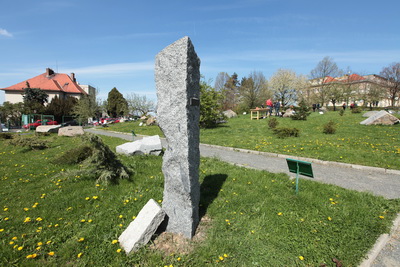
Illustrative photo: Stanislava Kyselová, Akademický bulletin
Scientists at the
Institute of Geophysics analysed the 2013 North Korean nuclear explosion
characterized by significant non-isotropic radiation which was manifested by distinct seismic
waves. They demonstrated that these were not generated by a tectonic earthquake triggered by a
nuclear explosion but resulted rather from the strong stress in the surrounding rock.
Vavryčuk, V.; Kim, S.G.: Nonisotropic radiation of the 2013 North Korean nuclear explosion,
Geophysical Research Letters, 41, 2014.
http://onlinelibrary.wiley.com/doi/10.1002/2014GL061265/abstract
Palaeomagnetic and palaeogeographic investigations at the
Institute of Geology concluded that the Prague Basin was a continental rift basin
situated on the presumed Perunica microplate at the southern subtropical palaeolatitudes of 24° in
Late Silurian, which drifted and rotated during the Variscan Orogeny.
Using laboratory experiments and numerical modelling, scientists from the
Institute of Geology, the
Institute of Rock Structure and Mechanics and Charles University discovered the
mechanism explaining the formation of large unique landforms, such as arches, alcoves, pedestal
rocks and pillars, produced by the weathering and erosion of sandstone.
Jiri Bruthans, Jan Soukup, Jana Vaculikova, Michal Filippi, Jana Schweigstillova, Alan L. Mayo,
David Masin, Gunther Kletetschka, Jaroslav Rihosek: Sandstone landforms shaped by negative feedback
between stress and erosion. Nature Geoscience 7,597–601 (2014).
http://www.nature.com/ngeo/journal/v7/n8/full/ngeo2209.html
Experts of the
Institute of Atmospheric Physics explained differences in the impact of hot and
cold spells on acute and chronic ischaemic heart diseases. This could result in better treatments
for sufferers of these diseases.
Hana Davídkovová, Eva Plavcová, Jan Kynčl, Jan Kyselý: Impacts of hot and cold spells differ
for acute and chronic ischaemic heart diseases
BMC Public Health 2014, 14:480.
http://www.biomedcentral.com/1471-2458/14/480
The
Institute of Geonics focused on the aspects of the safe performance of underground
mining operations at a depth of about 1,000 metres from the point of view of their stability and
temperature, and proposed the relevant methodology and safety procedures based on experimental
data.
The
Institute of Rock Structure and Mechanics employed a whole complex of analytical
techniques to study and identify changes in the structure and other characteristics of coal caused
by radioactive elements, namely uranium, as well as by tectonic and hydrothermal activities.
Havelcová, Martina; Machovič, Vladimír ; Mizera, Jiří; Sýkorová, Ivana; Borecká, Lenka;
Kopecký, L.: A multi-instrumental geochemical study of anomalous uranium enrichment in coal.
Journal of Environmental Radioactivity 2014.
http://www.ncbi.nlm.nih.gov/pubmed/24998749
II. LIFE AND CHEMICAL SCIENCES
Chemical Sciences
Institute of Analytical Chemistry of the CAS –
http://www.iach.cz/
Institute of Inorganic Chemistry of the CAS –
http://www.iic.cas.cz/
Institute of Chemical Process Fundamentals of the CAS –
http://www.icpf.cas.cz/
J. Heyrovsky Institute of Physical Chemistry of the CAS –
http://www.jh-inst.cas.cz/
Institute of Macromolecular Chemistry of the CAS –
http://www.imc.cas.cz/cz/
Institute of Organic Chemistry and Biochemistry of the CAS –
http://www.uochb.cz/

Illustrative
photo: Stanislava Kyselová, Akademický bulletin
The research institutes in this field focus on both the structural and functional
characterization of new organic and inorganic compounds, on the advancement of knowledge in
genomics, proteomics, medicine and environmental protection. Their activities are directed towards
topics on the boundary of inorganic chemistry and materials science and other disciplines. They
conduct fundamental research in physical chemistry, electrochemistry and chemical physics, develop
new methods for analytical and bioanalytical chemistry as well as polymeric biomaterials for
targeted therapeutic applications. The investigated topics include polymeric drug carriers,
polymeric layered systems for contact with biological media, bio-analogous polymers, hydrogels for
biomedical applications. The research is also oriented at nanotechnologies and nanomaterials that
can find applications in chemical catalysis, photo catalysis and electrochemistry, and are used as
adsorbents, membranes, sensors, optical, self-cleaning and protective materials, etc.
A team from the
J. Heyrovsky Institute of Physical Chemistry and the
Institute of Biophysics has contributed towards the breakthrough solution to one
of the most fundamental issues of contemporary science: i.e. how biological substances came into
existence on our planet or in outer space. Their experiments have demonstrated that
extraterrestrial impacts could have contributed to the synthesis of the building blocks of the
first life-giving molecules which appeared on Earth some 4–3.85 billion years ago, during the
period of Late Heavy Bombardment of the Earth´s surface with extraterrestrial bodies. The
scientists have simulated the high-energy synthesis of nucleobases from formamide during the impact
of an extraterrestrial body and demonstrated that impacts could have contributed to the formation
of biogenic molecules.
Martin Ferus, David Nesvorný,Jiří Šponer, Petr Kubelík, Regina Michalčíková, Violetta
Shestivská, Judit E. Šponer, Svatopluk Civiš:: High-energy chemistry of formamide: A unified
mechanism of nucleobase formation, PNAS vol. 112 no. 3, 657–662,
http://www.pnas.org/content/112/3/657.abstract
Basic research into the relationship between the structure, physical, chemical and biological
properties of water-soluble polymers or supramolecular structure-forming polymers onducted at the
Institute of Macromolecular Chemistry has resulted in the development of drug
carriers and carriers of other biologically-active molecules for use in human medicine. Special
attention has been paid to the development of actively-targeted drug delivery systems bringing
polymer-bound cytotoxic drugs into tumours or to the receptors expressed in a membrane of the
tumour cells.
Chemists at the Institute of Macromolecular Chemistry also confirmed the possibility of
preparing biosensors directly revealing infectious agents in patients´ sera.
The
Institute of Analytical Chemistry has tested a novel method of treating glass
surfaces and etching channels in glass microchips with supercritical water.
Find more about research in this area at:
mj.: P. Karásek, J. Grym, M. Roth, J. Planeta, F. Foret. Etching of glass microchips with
supercritical water. Lab Chip. 2015 Jan 7;15(1):311-8.
http://www.ncbi.nlm.nih.gov/pubmed/25372151
J. Hynek, V. Kalousek, R. Žouželka, P. Bezdička, P. Dzik, J. Rathouský, J. Demel, K. Lang: High
photocatalytic activity of transparent films composed of ZnO nanosheets.
Langmuir 30 (2014) 380-386. DOI: 10.1021/la404017q.
http://pubs.acs.org/doi/abs/10.1021/la404017q
J. Demel, J. Hynek, P. Kovář, Y. Dai, C. Taviot-Guého, O. Demel, M. Pospíšil, K.
Lang: Insight into the Structure of Layered Zinc Hydroxide Salts Intercalated with Dodecyl
Sulfate Anions. J Phys. Chem. C 118 (2014) 27131-27141.
http://pubs.acs.org/doi/abs/10.1021/jp508499g
Janne Savolainen, Frank Uhlig,,Saima Ahmed, Peter Hamm & Pavel Jungwirth: Direct
observation of the collapse of the delocalized excess electron in water. Nature Chemistry 608/2014;
6. 697-701( 2014).
http://www.nature.com/nchem/journal/v6/n8/abs/nchem.1995.html#affil-auth
Patent:
Patent: Kaštánek F., Šolcová O., Maléterová Y., Spáčilová L., Maternová H., Mašín P., Žebrák
R.: Device for Photo-Catalytic Decontamination of Water Containing Organic Compounds, Especially
Endocrine Disruptors. Pat. No. PV 2013-522.
Spáčilová L., Maléterová Y., Morozová M., Kaštánek F., Dragounová P., Matejkova M., Mašín
P., Ezechias M., Kresinova Z., Šolcová O.: Wastewater Treatment on Photocatalytic Pilot Plant Unit.
(Eng) Res. Chem. Intermed., accepted (2014).
Biological and Medical Sciences
Institute of Biophysics of the CAS –
http://www.ibp.cz/cs/
Institute of Biotechnology of the CAS –
http://www.ibt.cas.cz/
Institute of Physiology of the CAS –
http://www.fgu.cas.cz/
Institute of Microbiology of the CAS –
http://mbu.cas.cz/
Institute of Experimental Botany of the CAS –
http://www.ueb.cas.cz/cs
Institute of Experimental Medicine of the CAS –
http://uem.avcr.cz/
Institute of Molecular Genetics of the CAS –
http://www.img.cas.cz/
Institute of Animal Physiology and Genetics of the CAS –
http://www.iapg.cas.cz/
Here researchers have given priority to the structure, evolution and function of living systems
and processes going on at different levels – from molecules through cells to whole organisms.
Disorders of the nervous, immune, cardiovascular and reproductive systems as well as genetic bases
of diseases have been surveyed. The scope of research topics ranges from DNA integrity and cell
division control through animal embryology to animal models of human diseases. Experimental
medicine centres on neuropathology, cancer research, molecular embryology, stem cells and nervous
tissue regeneration. Microbiologists study genetics and physiology of microorganisms and their
resistance to antibiotics, production of microbial metabolites, the role of microorganisms in the
onset of autoimmune diseases and focus also on immunotherapies of oncogenic diseases. Basic
research in plant biology, namely in plant genetics, physiology and biotechnology, centres on
hormonal and ecological control of plant growth and development, plant viruses as well as design
and preparation of vaccines from plants.
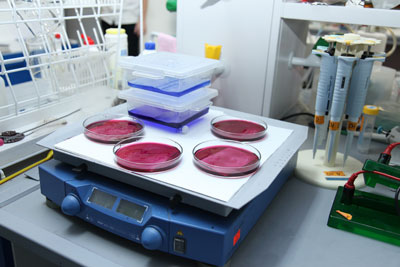
Illustrative photo: Stanislava Kyselová, Akademický bulletin
The
Institute of Biophysics has followed on from the above-mentioned study concerning
the synthesis of nucleobases from formamide and has worked out a theoretical model explaining how
in the earliest stages of evolution nucleotide molecules could have self-polymerised without the
catalytic activity of enzymes to form short chains which subsequently developed the required
catalytic functions and formed longer strands of RNA and eventually complex biomolecules.
Judit E. Šponer, Jiří Šponer, Alessandra Giorgi, Ernesto Di Mauro, Samanta Pino, and Giovanna
Costanzo: Untemplated Nonenzymatic Polymerization of 3′,5′cGMP: A Plausible Route to 3′,5′-Linked
Oligonucleotides in Primordia. J. Phys. Chem. B, 2015, 119 (7), pp 2979–2989.
http://pubs.acs.org/doi/abs/10.1021/acs.jpcb.5b00601
The Department of phototrophic microorganisms of the
Institute of Microbiology has enhanced our knowledge of one of the most
fundamental processes on Earth: photosynthesis. Studying the cyanobacterium Synechocystis,
researchers have discovered a chlorophyll and b-carotene binding protein complex involved in the
early steps of the assembly of photosystem II, which is vital for the process of photosynthesis.
Knoppová, J., Sobotka, R., Tichý, M., Yu, J., Halada, P., Nixon, P.J., Komenda, J. (2014)
Discovery of a Chlorophyll Binding Protein Complex Involved in the Early Steps of Photosystem II
Assembly in Synechocystis. Plant Cell 26, 1200-1212.
http://www.ncbi.nlm.nih.gov/pubmed/24681620
Chidgey, J.W., Linhartová, M., Komenda, J., Jackson, P.J., Dickman, M.J., Canniffe, D.P.,
Koník, P., Pilný, J., Hunter, C.N., Sobotka, R. (2014) A Cyanobacterial Chlorophyll Synthase-HliD
Complex Associates with the Ycf39 Protein and the YidC/Alb3 Insertase. Plant Cell 26:1267-79.
http://www.ncbi.nlm.nih.gov/pubmed/24681617
The International Wheat Genome Sequencing Consortium, involving Czech scientists, has published
a chromosome-based draft sequence of the large and complex genome of bread wheat. Its genetic
blueprint has been obtained using the chromosome-based strategy developed by a research team at the
Institute of Experimental Botany. For the first time, researchers and breeders
have at their disposal a set of tools enabling them to rapidly locate specific genes on individual
wheat chromosomes throughout the genome. This can accelerate the breeding of varieties with higher
yields and better grain quality as well as being more resistant to disease and pests or abiotic
stress.
http://www.sciencemag.org/site/extra/wheatgenome/
New findings can help fight cancer: working within the framework of an international team,
researchers from the
Institute of Biotechnology have discovered that cancer cells deprived of
mitochondrial DNA are able to acquire it from the cells of the host (a mouse). As a result they
could renew their mitochondrial functions, namely to restart cellular respiration, and regain the
ability to create tumours. The
Institute of Molecular Genetics threw light upon why some metastatic cells
resisted radio-therapy. The new findings can open the way towards reducing and overcoming the
resistance and increase the patients´ chances of survival.
An S. Tan, James W. Baty, Lan-Feng Dong, Ayenachew Bezawork-Geleta, Berwini Endaya, Jacob
Goodwin, Martina Bajzikova, Jaromira Kovarova, Martin Peterka, Bing Yan, Elham Alizadeh Pesdar,
Margarita Sobol, Anatolyj Filimonenko, Shani Stuart, Magdalena Vondrusova, Katarina Kluckova,
Karishma Sachaphibulkij, Jakub Rohlena, Pavel Hozak, Jaroslav Truksa, David Eccles, Larisa M.
Haupt, Lyn R. Griffiths, Jiri Neuzil, Michael V. Berridge: Mitochondrial Genome Acquisition
Restores Respiratory Function and Tumorigenic Potential of Cancer Cells without Mitochondrial DNA,
Cell Metabolism Volume 21, Issue 1, p81–94, 6 January 2015.
http://www.cell.com/cell-metabolism/abstract/S1550-4131(14)00554-3
Researchers at the
Institute of Animal Physiology and Genetics and their foreign colleagues have made
a fundamental discovery concerning the multiple role of an enzyme called Polo-like Kinase-1 in
oocytes undergoing maturation and identified its different functions during meiotic cell division
and mitosis.
Solc P, Kitajima TS, Yoshida S, Brzakova A, Kaido M, Baran V, Mayer A, Samalova P, Motlik J,
Ellenberg J. Multiple requirements of PLK1 during mouse oocyte maturation. PLoS One. 2015 Feb
6;10(2):e0116783.
http://journals.plos.org/plosone/article?id=10.1371/journal.pone.0116783
Find more about research in this area at:
Zeng,Y.,Feng F.,Medová H.,Dean J.,Koblížek M.: Functional type 2 photosynthetic Reaction
centers found in the rare bacterial phylum Gemmatimonadetes: PNAS 111,7795-7900,2014
Proc. Natl. Acad. Sci. USA; doi: 10.1073/pnas.1400295111.
http://www.pnas.org/content/111/21/7795.abstract
Hynek Strnad, Miroslav Patek, Jan Fousek, Juraj Szokol, Pavel Ulbrich, Jan Nesvera, Vaclav
Paces, Cestmir Vlcek: Genome Sequence of Rhodococcus erythropolis Strain CCM2595, a Phenol
Derivative-Degrading Bacterium; Genome Announcements, March/April 2014 vol. 2 no. 2 e00208-14;
http://genomea.asm.org/content/2/2/e00208-14.full
Soudek P., Petrová Š., Vaňková R., Song J., Vaněk T.: Accumulation of heavy metals using Sorghum
sp.; CHEMOSPHERE 104: 15-24, 2014.
http://www.sciencedirect.com/science/article/pii/S0045653513013490
Petrasek T., Prokopova I., Sladek M., Weissova K., Vojtechova I., Bahnik S., Zemanova A.,
Schönig K., Berger S., Tews B., Bartsch D., Schwab M.E., Sumova A., Stuchlik A.: Nogo-A-deficient
Transgenic Rats Show Deficits in Higher Cognitive Functions, Decreased Anxiety, and Altered
Circadian Activity
Patterns.Front Behav Neurosci. 2014 Mar 18;8:90.
http://www.ncbi.nlm.nih.gov/pubmed/24672453
Petrasek T., Prokopova I., Bahnik S., Schonig K., Berger S., Vales K., Tews B., Schwab M.E.,
Bartsch D., Stuchlik A.: Nogo-A downregulation impairs place avoidance in the Carousel maze but not
spatial memory in the Morris water maze. Neurobiol Learn Mem. 2014 Jan;107:42-9.
http://www.ncbi.nlm.nih.gov/pubmed/24211256
Forostyak S., Homola A., Turnovcova K., Svitil P., Jendelova P., Sykova E.: Intrathecal
Delivery of Mesenchymal Stromal Cells Protects the Structure of Altered Perineuronal Nets in
SOD1Rats and Amends the Course of ALS. Stem Cells. 2014 Dec;32(12):3163-72.
http://www.ncbi.nlm.nih.gov/pubmed/25113670
Bureš Z., Bartošová J., Lindovský J., Chumak T., Popelář J., Syka J. (2014) Acoustical
enrichment during early postnatal development changes response properties of inferior colliculus
neurons in rats. Eur. J. Neurosci 2014, Vol. 40, pp. 3674–3683. IF 3.669.
http://www.ncbi.nlm.nih.gov/pubmed/25224160
Zuzana Cvačková, Daniel Matějů, David Staněk: Retinitis Pigmentosa Mutations of SNRNP200
Enhance Cryptic Splice-Site Recognition. Human Mutation, Colume 35, Issue 3, 308–317, March
2014.
http://onlinelibrary.wiley.com/doi/10.1002/humu.22481/abstract
Kyjacova L., Hubackova S., Krejcikova K., Strauss R., Hanzlikova H., Dzijak R., Imrichova T.,
Simova J., Reinis M., Bartek J., Hodny Z.: Radiotherapy-induced plasticity of prostate cancer
mobilizes stem-like non-adherent, Erk signaling-dependent cells. Cell Death & Differentiation
2014 Jul 11.
http://www.ncbi.nlm.nih.gov/pubmed/25012501
Martin Soste, Rita Hrabakova,Stefanie Wanka,Andre Melnik,Paul Boersema, Alessio Maiolica,Timon
Wernas,Marco Tognetti,Christian von Mering,Paola Picotti: A sentinel protein assay for
simultaneously quantifying cellular processes. Nature Methods, Volume:11, Pages:1045–1048
(2014).
http://www.nature.com/nmeth/journal/v11/n10/full/nmeth.3101.html
Biological-Ecological Sciences
Biology Centre of the CAS –
http://www.bc.cas.cz/
Institute of Botany of the CAS –
http://www.ibot.cas.cz/
Global Change Research Centre of the CAS –
http://www.cvgz.cas.cz/
Institute of Vertebrate Biology of the CAS –
http://www.ivb.cz/
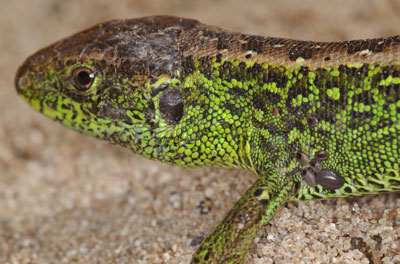
Photo: Jan Erhart, Archive of Biology centre
Nymphs of the castor bean tick feeding on a sand lizard
Geobotanics, hydrobiology, entomology, parasitology, soil biology, microbiology, ecology,
molecular genetics, genetic engineering – these are only a few examples documenting the wide range
of topics covered by the institutes working in biological-ecological sciences. They carry out
fundamental research on species, populations and communities of plants, study the genetic basis of
development cycles and biorhythms of insects, insect pests, human and animal parasites at the
cellular and molecular levels as well as whole organisms. They deal with the structure and dynamics
of soil organism communities in both natural and human-affected ecosystems, interactions amongst
soil animals, microorganisms and the abiotic part of the soil environment, the soil microstructure
and nutrient cycling.
Special attention is paid to global change and its manifestations in the atmosphere, land biota
and human society. Scientists gain knowledge in water chemistry, biochemistry, bacteriology,
protozoology, algology and ichthyology. Physiological, behavioural, ecological and evolutionary
mechanisms of vertebrates are also examined, as well as their reproductive strategies, survival
rates, feeding behaviour, and inter- and intraspecific interactions.
The
Biology Centre has continued the study of Trypanosomes that cause a variety of
diseases. One of the priorities was to discover mechanisms that make some parasites highly
successful. Researchers have defined the molecular composition of saliva of the tick Ixodes ricinus
and discovered more than 1,500 proteins located at the interface between ticks, the vertebrate
host, and the tick-borne pathogens, which is essential for seeking future methods of controlling
tick-borne diseases.
An international team including scientists from the
Institute of Botany have proposed a system classifying alien species from
different animal and plant groups according to the magnitude of their environmental impacts on
native fauna and flora. It makes it possible to directly compare impacts caused by different
mechanisms, such as competition, predation, parasitism and hybridization.
Tim M. Blackburn Franz Essl, Thomas Evans, Philip E. Hulme, Jonathan M. Jeschke, Ingolf Kühn,
Sabrina Kumschick, Zuzana Marková, Agata Mrugała, Wolfgang Nentwig, Jan Pergl, Petr Pyšek, Wolfgang
Rabitsch, Anthony Ricciardi, David M. Richardson a další: A Unified Classification of Alien Species
Based on the Magnitude of their Environmental Impacts
PLoS Biology, May 6, 2014.
http://journals.plos.org/plosbiology/article?id=10.1371/journal.pbio.1001850
Researchers from the
Institute of Vertebrate Biology and collaborating universities have proved that
the devastating bat disease known as white-nose syndrome (WNS) occurs in the Czech Republic,
although without the mass mortality of bats compared to the US where the fungal disease was fatal
for millions of bats. A new and reliable tool for diagnosing white-nose syndrome has also been
introduced: ultraviolet light. If directed at the wings of bats suffering from the disease, it
produces a distinctive orange-yellow fluorescence at the places of microscopic skin lesions caused
by WNS.
Jan Zukal, Hana Bandouchova, Tomas Bartonicka, Hana Berkova, Virgil Brack, Jiri Brichta, Matej
Dolinay, Kamil S. Jaron, Veronika Kovacova, Miroslav Kovarik, Natália Martínková, Karel Ondracek,
Zdenek Rehak, Gregory G. Turner, Jiri Pikula: White-Nose Syndrome Fungus: A Generalist Pathogen of
Hibernating Bats. PLoS One, May 12, 2014.
http://journals.plos.org/plosone/article?id=10.1371/journal.pone.0097224
Find more about research in this area at:
Kopáček J, Hejzlar J., Porcal P., Posch M.: A mass-balance study on chloride fluxes in a large
central European catchment during 1900–2010. Biogeochemistry. Roč. 120 (2014), s. 319–335.
http://link.springer.com/article/10.1007%2Fs10533-014-0002-2#page-1
Kopáček, J., Hejzlar, J., Porcal, P., Posch, M. (2014). Sulphate leaching from diffuse
agricultural and forest sources in a large central European catchment during 1900–2010. Science of
the Total Environment Volumes 470–471, 1 February 2014, Pages 543–550.
http://www.sciencedirect.com/science/article/pii/S0048969713011571
Miroslav Trnka, Reimund P. Rötter, Margarita Ruiz-Ramos, Kurt Christian Kersebaum, Jørgen E.
Olesen, Zdeněk Žalud & Mikhail A. Semenov: Adverse weather conditions for European wheat
production will become more frequent with climate change. Nature Climate Change4, 637–643
(2014).
http://www.nature.com/nclimate/journal/vaop/ncurrent/full/nclimate2242.html
R. Brázdil, K. Chromá, L. Řezníčková1, H. Valášek, L. Dolák, Z. Stachoň, E. Soukalová, and P.
Dobrovolný, The use of taxation records in assessing historical floods in South Moravia, Czech
Republic. Hydrol. Earth Syst. Sci., 18, 3873–3889, 2014.
www.hydrol-earth-syst-sci.net/18/3873/2014/
III. HUMANITIES AND SOCIAL SCIENCES
Social and Economic Sciences
Main Library of the CAS –
http://www.lib.cas.cz/
Economics Institute of the CAS –
http://www.ei.cas.cz/
Institute of Psychology of the CAS –
http://www.psu.cas.cz
Institute of Sociology of the CAS –
http://www.soc.cas.cz/
Institute of State and Law of the CAS –
http://www.ilaw.cas.cz
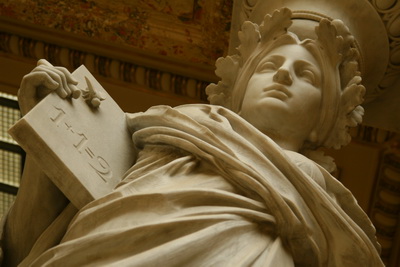
Illustrative photo: Stanislava Kyselová, Akademický bulletin
Czech society which has experienced transformation in all spheres of its life since 1989,
beginning from economics through deep social changes to the transformation of the legal system, is
studied by historians, lawyers and experts in social and economic sciences. They also address such
issues as short-term and long-term social processes in Czech society in the context of European
integration policies, the transformation of global society; they conduct individual and repetitive
empirical surveys and comparative research studies. Personality psychology, social psychology and
cognitive psychology are also at the centre of attention, as well as ethical and antisocial
behaviour of individuals, the hierarchy of values in society, sociology of education and
stratification and so on.
The project investigating the ethical and psychological factors of bullying and coping with it
in primary schools, which was carried out at the
Institute of Psychology, has brought results useful for school teachers.
Kollerová, L., Janošová, P., Říčan, P. (2014). Moral disengagement from bullying: The effects
of gender and classroom. The New Educational Review, 37(3), 280-291.
http://www.educationalrev.us.edu.pl/e37/b22.pdf
Janošová, P., Říčan, P. (2014). Social climate of the class through the eyes of the actors in
bullying. 14th Biennal Conference of the European Association for Research on Adolescence (EARA)
Izmir (Çeşme), 3.9.– 6.9. 2014.
The
Institute of Sociology has examined the notion of national identity, which is a
major research topic in the social sciences. The latest National Identity Survey carried out in
many European countries, including the Czech Republic, has brought valuable data to light about the
perception of the characteristics of a nation (nation state, ethno-cultural nation), people´s
relationship to territorial and administrative entities, nationalism, attitudes towards immigration
etc. It shows that more than 95 per cent of the people of the Czech Republic regard knowledge of
the Czech language as the most important prerequisite to be a genuine Czech, 84 per cent consider
it important to be born in the Czech Republic, 71 per cent to have Czech ancestors and only 29 per
cent to be a Christian.
The
Institute of State and Law has focused on problems in the proof of causation in
medical malpractice cases. It has analysed alternative attitudes and suggested which alternative
appears the most just under respective conditions and in specific cases.
Find more about research in this area at:
Loeper, A.; Steiner, J.; Stewart, C. Influential opinion leaders. Economic Journal. 2014, roč.
124, č. 581, s. 1147-1167.
http://onlinelibrary.wiley.com/doi/10.1111/ecoj.12100/abstract
Babecký J.; Havránek T.; Matějů, J.; Rusnák, M.; Šmídková, K.; Vašíček, B.: Banking, debt, and
currency crises in developed countries: stylized facts and early warning indicators. Journal of
Financial Stability, 2014, Roč. 15, December, s. 1–17.
http://www.sciencedirect.com/science/article/pii/S1572308914000606
Dalibor Vobořil, Petr Květon, Martin Jelínek: Psychological Machinery: Experimental Devices in
Early Psychological Laboratories. Peter Lang, Frankfurt am Main 2014. 130 s.
History Sciences
Institute of Archaeology of the CAS, Brno –
http://www.arub.cz/
Institute of Archaeology of the CAS, Prague –
http://www.arup.cas.cz/
Institute of History of the CAS –
http://www.hiu.cas.cz/cs/
Masaryk Institute and Archives of the CAS –
http://www.mua.cas.cz/
Institute of Art History of the CAS –
http://www.udu.cas.cz/cs/
Institute of Contemporary History of the CAS –
http://www.usd.cas.cz
Institutes dealing with history, archaeology, art history and archives are concentrated on the
history of our nation and the development in this region from prehistory to the recent past
accentuating issues that create national and cultural identity, as well as on archival science.
The archaeological part of the research is based on the study of archaeological sources
ranging from field finds, including the study of artefacts and eco-facts in the context of
archaeological cultures.
Anthropology, archaeogenetics, archaeozoology, archaeobotanics and the latest methods of
physics, chemistry and other sciences help enhance knowledge of prehistoric agriculture, nutrition,
migration, arts and crafts, rituals and other aspects of the life of our ancestors.
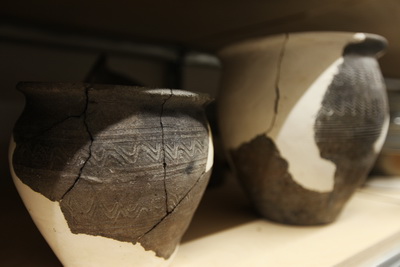
Illustrative photo: Stanislava Kyselová, Akademický bulletin
Last year the
Institute of Archaeology in Brno continued research on the early medieval Great
Moravian power centre of Mikulčice-Valy and the adjacent fortifications. The multidisciplinary
approach towards the huge volume of new data promises to yield novel assessments of the structure,
function and development of the area.
In 2014 the
Institute of Archaeology in Prague completed the project entitled The Burial group
from Prague Castle´s Lumbe Garden: analysis of jewellery and grave goods relating to the early
beginnings of Prague Castle. The 148 graves, abundant with gold, gilt and silver
jewellery as well as remains of wood and textile and other finds, offered a deep insight into
the life of people at the beginning of the Czech State in early medieval times.
Historical research exploits contemporary theoretical and methodological procedures with the
accent on the role of science in preserving national memory and in the forming of national identity
and culture. This approach is reflected by the
Institute of History and its Academic Atlas of Czech History, published in 2014,
which presents a collection of selected maps, cartographic models, illustrations, charts and
cartograms covering the whole period from prehistory to modern history.
The
Masaryk Institute and Archives finished its project documenting changes in the
policy of former Czechoslovak president Edvard Beneš. The Institute of Art History published a
monograph devoted to one of the icons of Prague´s historic architecture – the renaissance Star
Summer Palace.
Find more about research in this area at:
Martin Franc, Vlasta Mádlová: The History of the Czech Academy of Sciences in Pictures / Dějiny
Akademie věd v obrazech. Praha, Academia 2014. 459 s.
Humanities and Philology
Institute of Ethnology of the CAS –
http://data.eu.avcr.cz/
Institute of Philosophy of the CAS –
http://www.flu.cas.cz/cz
Oriental Institute of the CAS –
http://orient.avcr.cz/
Institute of Slavonic Studies of the CAS –
http://www.slu.cas.cz/
Institute of Czech Literature of the CAS –
http://www.ucl.cas.cz/cs/
Institute of the Czech Language of the CAS –
http://www.ujc.cas.cz/
The activities of the institutes belonging to this section are relevant to the national cultural
and educational status and contribute to the study and preservation of the cultural heritage of the
Czech nation. They study issues of philosophy, ethnology, language and literature. In philosophy,
they consider current questions of philosophical thinking and deal with the philosophical aspects
of related areas of science, the history of Czech and European philosophy, selected subjects in
logic, theory of science and the related disciplines in humanities (namely classical and medieval
studies).
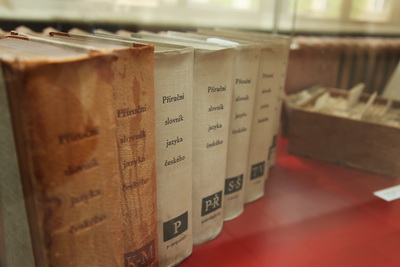
Illustrative photo: Stanislava Kyselová, Akademický bulletin
The
Institute of Philosophy prepared a collective monograph The Hussite Century which
represents one of the works commemorating the Czech priest, philosopher and early Christian
reformer, Jan Hus, who was burned at the stake for heresy 600 years ago, in July 1415.
The institutes specializing in oriental studies investigate history, religious and
philosophical systems, languages, literatures and cultures of the nations of Asia and Africa. The
research in ethnology focuses on the issues of migration and the discovery of ways of life and the
culture of socio-ethnic groups.
Klimeš, O.: Nationalism and modernism in the East Turkestan Republic, 1933–34. Central Asian
Survey, Pubished online 3 Nov 2014.
http://www.tandfonline.com/doi/abs/10.1080/02634937.2014.976947#.VRJ8TE10ypo
The
Institute of Ethnology contributed to two exceptional events: the world premiere
of Antonín Dvořák´s first opera Alfred and to the first presentation of an unknown Leoš Janáček
piano composition found in the collections of the Institute.
Research into the history of Czech literature from the remotest periods up to the present, and
in the sphere of the theory and sociology of literature has resulted, among other achievements, in
an extensive Corpus of Czech Verse, embracing more than 1,700 collections of Czech poetry from the
19th and early 20th centuries by the
Institute of Czech Literature.
Also, the research into the development of the Czech language investigates its standard and
non-standard varieties and its written and spoken forms from the synchronic and diachronic
perspectives. With this in mind, the Institute of the Czech Language mapped the word-formation of
field-names in Bohemia.
P. Štěpán, Towards analogy in toponyms. In: O. Felecan (ed.), Name and Naming. Proceedings of
the Second International Conference on Onomastics. Onomastics in Contemporary Public Space. Cluj:
Mega, 2013, s. 379-383.
NEW RESEARCH CENTRES AND FACILITIES
New research centres and facilities are being established to help fulfil the CAS aims. In 2014,
the implementation of outstanding projects subsidized from EU funds through the Operational
Programme Research and Development for Innovation went on, namely ELI Beamlines and BIOCEV.
ELI Beamlines is an international laser centre included in the European Extreme
Light Infrastructure project. Its construction in Dolní Břežany is headed and coordinated by the
Institute of Physics and is to be equipped with cutting-edge technology. First of all, unique
highperformance laser systems will generate light pulses capable of achieving an intensity yet to
be seen. Multidisciplinary research is expected to bring new knowledge in the field of biomedicine,
the development and testing of new materials, imaging and diagnostic methods for medicine, optics,
nanotechnology as well as in the field called “exotic physics”. In June 2015, the first phase of
the construction was completed and administrative and multi-functional buildings were handed over
for use.
http://www.eli-beams.eu/
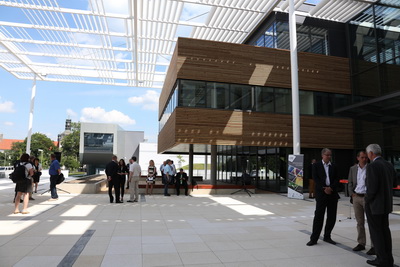
Photo: Stanislava Kyselová, Akademický bulletin
The building of the ELI-Beamlines centre in the foreground, the HiLASE building in the
background
BIOCEV – or the Biotechnology and Biomedicine Centre – is being constructed in
Vestec near Prague. It is a joint project of six CAS institutes aimed at establishing a European
Centre of Excellence in biomedicine and biotechnology and exploring the areas of functional
genomics, cellular biology and virology, structural biology and protein engineering, biomaterials
and tissue engineering and development of diagnostic and therapeutic procedures. Special attention
is to be paid to reproduction medicine, diabetes, autoimmune diseases, metabolic disorders etc. The
trial operational phase of the centre is to start in autumn 2015.
http://www.biocev.eu/
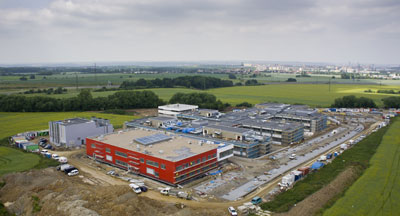
Photo: BIOCEV
Buildings of the Biotechnology and Biomedicine Centre – BIOCEV
In September 2014, a special ceremony launched
High average power pulsed
LASErs (HiLASE) – a new research centre of the Institute of Physics. The HiLASE
deals with the development and applications of a new generation of lasers and laser technologies
with significant application potential in both research and industries – more efficient, more
compact and stable than anywhere else in the world. These include primarily diode-pumped
solid-state lasers with high pulse energy and high repetition frequency with parameters that are
not currently available.
http://www.hilase.cz/
In early 2014, the Institute of Physics launched the
LABONIT project, constructing high-tech laboratories for the preparation and
characterization of nitride nano-heterostructures.
http://www.fzu.cz/laborator-pro-pripravu-a-charakterizaci-polovodicovych-struktur-na-bazi-nitridu-projekt-labonit

Photo: Archive of Institute of Physics
A research reactor for organometallic epitaxy
Also within the Institute the
Centre of Functional Materials for Bioapplications (FUNBIO) has been expanding, which broadens modern analytical methods to materials
on the border between the organic and inorganic world and will allow multilateral co-operation of
experts in physics, chemistry, biology and medicine.
http://www.fzu.cz/centrum-funkcnich-materialu-pro-bioaplikace-projekt-funbio
In April 2014, an opening ceremony was held in Brno to launch the new research Centre of
Excellence,
CzechGlobe, which is also a part of the CAS, and uses advanced infrastructure to
allow comprehensive research into ecological sciences, specifically the problem of global change
and three basic segments influenced by it, namely atmospheric processes and climate, ecosystems and
socioeconomic systems. For those purposes it can use an atmospheric
station, network of ecosystem stations, the systems of long-term impact experiments, an
aerial remote sensing laboratory and others.
http://www.czechglobe.cz/cs/
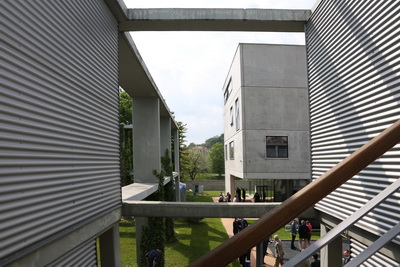
Photo: Stanislava Kyselová, Akademický bulletin
Buildings of the Czech Globe centre
The Institute of Microbiology opened a world-class centre for algal biotechnology,
Algatech, near Třeboň, the research program of which is focused on photosynthetic
microorganisms, algae, cyanobacteria and photosynthetic bacteria. Its laboratories study
photosynthesis in algae and photosynthetic bacteria, the regulation of cell cycles in algae,
technologies of algal production, algae as a source of valuable biochemicals for nutrition,
medicine and industry.
They deal with the production of algal biomass and its processing for various types of users.
The Institute of Macromolecular chemistry opened a new interdisciplinary innovation Centre of
Biomedicinal Polymers to prepare polymeric materials and systems for biological research and
medical applications.
http://www.alga.cz/
The
Institute of Physiology received a subsidy for two projects called
BrainView and
MitEnAl.
The aim of BrainView is to study neurodevelopmental and neurodegenerative disorders such as
autism, epilepsy, Alzheimer’s and Parkinson’s diseases. It is to focus
on fundamental mechanisms underpinning these diseases and thus open the way for the discovery
of possible treatments.
MitEnAl represents the System for multifactorial analysis of cellular energy, in
order to better understand the functioning of cellular energetics, important for the study of
inherited metabolic diseases and for the finding of mechanisms causing obesity and cardiovascular
diseases. For example, diseases caused by insufficient energetic functioning of mitochondria belong
among the most serious hereditary disorders affecting children at present.
http://www.fgu.cas.cz/articles/379-oppk-brainview
http://www.fgu.cas.cz/articles/380-oppk-mitenal
The Institute of Experimental Medicine presented two completed projects in 2014: The first is
the
Research Centre for Genomics and Proteomics, where scientists use new methods of
sequencing, chip analysis, protein analysis and analysis of functional properties of cells to study
influences of pollutants (especially polluted air) on the changes in human DNA and the human
organism as a whole. The second project is the Laboratory for Advanced Bioimaging of Living
Tissues, applying the most advanced technology to study cell cultures and living tissues in order
to enhance our knowledge of changes connected with the incidence and progress of neurodegenerative
diseases.
http://www.uem.cas.cz
SCIENCE FOR PRACTICAL APPLICATIONS
To transfer new scientific findings and newly developed technologies to practical use belongs
among the main tasks of the CAS. Such application-oriented activities are reflected in direct
contacts and co-operation between the CAS institutes and partner organizations from the industrial
sphere as well as in creating laboratories and centres orientated on improving contacts between
fundamental research, applied research and industries, such as the
Centre for Innovations in the Field of Nanomaterials and Nanotechnologies of the
J. Heyrovsky Institute of Physical Chemistry,
Algatech of the Institute of Microbiology,
HiLASE of the Institute of Physics, the Otto
Wichterle Centre of Polymer Materials and Technologies of the Institute of
Macromolecular Chemistry,
ALISI of the Institute of Scientific Instruments and many others.
http://av21.avcr.cz/miranda2/export/sitesavcr/av21/dokumenty/Aplikacni-laboratore_EN.PDF
Support of technology transfer and coordination of the CAS activities in the sphere of practical
applications is provided by the
Council for Cooperation of the CAS with Business and Application Spheres. Of no
less importance is the CAS co-operation with the Chamber of Deputies and the Senate of the
Parliament of the Czech Republic, state administration and local administration bodies
(municipalities, town districts, towns, regions) and non-governmental organizations.
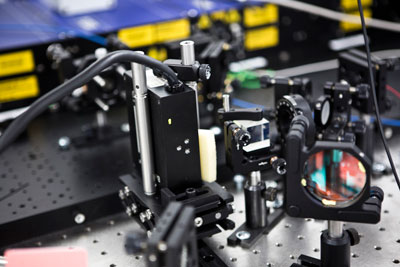
Photo: Archive Centre of Administration and Operations CAS
An experimental set-up for generating ultra-precision optical frequencies using femtosecond
lasers at the Application Laboratories of Microtechnologies and Nanotechnologies (ALISI)
The CAS efforts to transfer research findings into practical outputs and its co-operation
with partners in the industrial sphere are documented by the following examples:
As far as property rights are concerned, in 2014 the CAS institutes submitted 60 patent
applications, filed 31 utility models; they were granted 44 patents in the Czech Republic and 10
regional ones abroad, 32 utility models were registered in the CR. The number of invention
applications submitted abroad numbers 14; 3 cultivation certificates were granted in the CR and 4
abroad etc.
The
Institute of Rock Structure and Mechanics obtained a patent for equipment
generating a strong magnetic field without electric energy supplies.
A novel method of the microwave recycling of waste PET bottles, developed at the
Institute of Chemical Process Fundamentals, has been sold to a foreign company,
which is now building a unit operating on this principle. The method for the chemical
de-polymerization
of waste polyethylene terephthalate (PET) by the application of microwave radiation is
characterized by a low consumption of energy and a high purity of the product (terephthalic acid
and ethylene glycol). The method has been patented both in the Czech Republic and abroad.
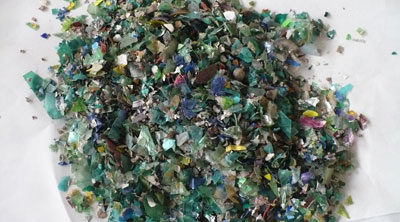
Photo: Archive of Institute of Chemical Process Fundamentals
Microwave recycling of waste PET bottles: Coloured PET scraps ale depolymerized using
microwave radiation and turned into coloureless terepthhalic acid.
Researchers from the
Biology Centre and University of South Bohemia devised a new and cheap method to
detect bacteria Paenibacillus larvae which causes an infectious and highly contagious disease of
the honey bee brood.
The
J. Heyrovsky Institute of Physical Chemistry won the Czech Science Foundation
(GACR) President´s Award for creating several new types of zeolites (which are alumina-silicate
minerals commonly used as adsorbents and catalysts) with great potential for industrial
technologies.
PUBLISHED BOOKS
Support for publishing selected research and books popularizing science written by its own
staff, experts from other research institutions and other authors is part and parcel of the CAS
activities. In 2014, the subsidy from the CAS amounted to almost 14 million CZK. This sum helped
publish 62 titles, either by the Academia publishing house, which is a part of the Centre of
Administration and Operations of the CAS, or by other CAS institutes. In this section we have used
translated titles of the publications concerned, which are published in Czech. However, many of
them contain English summaries.
A number of publications issued last year by experts from the Institute of History mapped our
past:
-
Academic Atlas of Czech History by E. Semotanová, J. Cajthaml et al. won the title
“Book of the Year” in the contest organized by the Academia publishing house, it was also awarded “
The Jury Prize for an historical encyclopaedic work” and it won the title of “Magnesia Litera for
the publishing feat of the year”.
-
Historical Atlas of the Towns of the Czech Republic – volume
26 – Most: research editor Robert Šimůnek. It is the 26th volume published within
the greater project, itself part of the pan-European project of historical atlases for comparative
histories of towns, implemented under the auspices of the Commission Internationale pour l´Histoire
des Villes. The atlases summarize and present the history of the respective towns from the point of
view of their historical, urban-planning, economic, regional, demographic, political and cultural
status and development, through reproductions of old maps and plans, iconographic material and an
authoritative text.
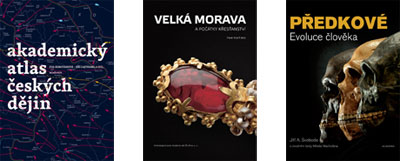
Archaeologists published remarkable books dealing with prehistoric events:
- J. A. Svoboda from the Institute of Archaeology in Brno is the author of the book
Ancestors: Human Evolution, assembling what is known about human evolution from
the first hominids through the worlds of Australopithecus and Neanderthals to the anatomically
modern man, as seen not only by palaeoanthropology, but also evolutionary biology and other
scientific disciplines. It describes their adaptations to new natural environments, the development
of their skills, including new forms of communication and the beginning of the use of symbols.
- In 2014 the
Institute of Archaeology in Brno also issued a collective monograph
Great Moravia and the Beginnings of Christianity (edited by Pavel Kouřil) based on
priceless archaeological discoveries and finds displayed at the travelling exhibition bearing the
same name.
A team of experts from the
Institute of the Czech Language, including editors M. Pravdová and I. Svobodová,
prepared
The Academic Guidebook of the Czech Language which is the first printed revised
and completed version of The Internet Language Reference Book. It offers general explanations about
the
Czech language, its orthography, morphology, word formation and some syntactic
phenomena. The book is intended for both the lay public and professionals, especially
teachers and students, and it won the title of “Best-Seller of 2014” of the Academia publishing
house.
The Institute of the Czech Language also launched the complete internet version of
The Academic Guide-book of the Czech Language at
http://prirucka.ujc.cas.cz/
Researchers from the
Oriental Institute prepared two monographs in English to be published by
prestigious foreign publishing houses in 2015:
-
Stefano Taglia:
Intellectuals and Reform in the Ottoman Empire: The Young Turks on the Challenges of
Modernity (London: Routledge, 2015)
and
-
Ondrej Klimes: Struggle by the Pen:
The Uyghur Discourse of Nation and National Interest, c.1900–1949 (Leiden: Brill,
2015).
The achievements of the
Institute of Philosophy include a monograph by Jaroslav Peregrin
Inferentialism: Why Rules Matter (New York, Palgrave Macmillan 2014).
Contemporary Czech migration abroad, the social activities of Czechs in foreign countries and
their relationship to the Czech Republic, and to the communities of earlier migrants are the topic
of this book by Stanislav Brouček and Tomáš Grulich entitled
The New Emigration from the Czech Republic after the Year 1989 and the Policy of Return:
Examining the Issue in the Context of the Development of Migrations in the World
and published by the Institute of Ethnology in cooperation with the Senate of the Parliament
of the Czech Republic and The International Organization for Migration.
THE ACADEMY AS A PARTNER
The guiding principle that “There is no high quality science without international co-operation”
is indicative of the research activities of the CAS and their evaluation globally.
The academy as a partner:
in International Co-operation, ERA and Operational Programmes of the EU´s structural
funds
In the year 2014, the CAS payed great attention to the Czech Republic´s active integration into
the European Research Area, to preparations of Operational Programmes in order to use European
structural and investment funds for the development of new research centres. It continued to
co-operate with European and world organizations, including The European Academies Science Advisory
Council (EASAC), All European Academies (ALLEA), the International Council for Science (ICSU) and the InterAcademy Panel (IAP), and it also supported the integration of Czech scientists into significant
international projects. Czech researchers were active in projects within the framework of large
international research infrastructures, co-operating particularly with the European Organization
for Nuclear Research (CERN), the European Molecular Biology Laboratory (EMBL) and the European Southern Observatory (ESO), and they enjoyed long-term access to unique research infrastructures,
technologies, instruments and scientific data. Bilateral co-operation expanded with partner
organizations in more than 40 countries.
In 2014, the CAS participated in 122 projects within the EU Seventh Framework Programme,
including, for instance, the project
Antitick Vaccines to Prevent Tick-borne Diseases in Europe involving researchers from The
Biology Centre and 5 more institutions from 5 European countries.
The projects of the
European Research Council included, among others: Spintronics based on relativistic phenomena
in systems with zero magnetic momen
t, AdG (the Institute of Physics);
Regular Arrays of Artificial Surface-Mounted Dipolar Molecular Rotors, AdG (the Institute
of Organic Chemistry and Biochemistry);
Regime and Society in Eastern Europe 1956–1989: from Extended Reproduction to Social and
Political Change, AdG (the Institute of Contemporary History).
The CAS also worked on four projects as part of the Horizon 2020 EU Research and Innovation
Programme, one of which concentrated on
The Implementation of activities described in the Roadmap to Fusion during Horizon 2020 through
a Joint programme of the members of the EUROfusion consortium, involving the Institute of
Plasma Physics and 29 more institutions from 27 countries.
Last year the Technology Centre of the CAS organized – in cooperation with the Ministry of
Education, Youth and Sports – a conference called
The 11th Czech Days for European Research.
http://www.tc.cz
There were 347 projects either directly financed or grant-aided from abroad in the year 2014,
including 224 as part of EU programmes. International Conferences Researchers from the CAS
institutes participated in a number of scientific conferences and congresses in 2014, gave more
than 3,700 lectures and other contributions and presented almost 3,000 research posters there. 309
more Czech scientists lectured at foreign universities and – vice versa – some 1,150 foreign guests
came to give lectures at individual CAS institutes. The CAS was an organizer or co-organizer of
more than 520 international conferences, congresses, symposia and workshops held in the Czech
Republic.
in Regional Co-operation
Last year the CAS researchers participated in 22 projects of the Regional Cooperation
Programme consisting of regions, municipalities, universities, state-funded institutions and
commercial companies as their partners. One of the projects, a
System for Detecting Air-borne Pollution, was carried out by the Institute of Physics in
the region of Central Bohemia.
in Co-operation with Educational Establishments
Co-operation with elementary and higher schools, universities, technical colleges and other
educational institutions at all levels is another key element of the CAS activities assuming the
form of teaching and the supervision of students’ qualification theses performed at laboratories
and institutes of the CAS. As well, the CAS co-operated in lectures, various courses, workshops,
summer schools, knowledge contests and so on at these educational facilities. The CAS researchers
also participated in writing and publishing text books or preparing e-learning courses.
Last year 4,017 individual semester courses of lectures, seminars or practical exercises were
provided at universities and technical colleges, totalling some 75,000 hours. In addition to that,
The CAS researchers prepared a number of specialized seminars and series of lectures and other
events for university students, including the following:
Summer Training Course on Experimental Plasma Physics (SUMTRAIC) offered by the Institute
of Plasma Physics, a
Course in Paleoecology organized by the Institute of Botany, a
Course in Micromorphology at the Institute of Geology, and a course entitled
Physiology and Molecular Biology of Plants organized by the Institute of Experimental
Botany.
AWARDS AND MEDALS
The most significant awards to the researchers of the CAS
In the year 2014, researchers of the CAS institutes were granted a
number of awards, medals and prizes appreciating the relevance of their work. They were awarded not
only by the CAS, but also by other Czech and foreign scientific institutions as well as other state
bodies.
The most prominent ones include:
The National Prize of the Government of the Czech Republic “Czech Brain” to:
Emil Paleček (Institute of Biophysics) for lifelong research work

Photo: Zdeněk Tichý, Archive of Academy of Sciences Library
Prof. Emil Paleček
The
“Czech Brain” in other categories to:
Pavel Izák (Institute of Chemical Process Fundamentals) for technical sciences,
Pavla Eliášová (J. Heyrovsky Institute of Physical Chemistry) in the “Doctorandus”
Category.
The Silver Commemorative Medal
of the Senate of the Parliament of the Czech Republic was obtained by:
Emil Paleček (Institute of Biophysics) again for lifelong research work;
František Vyskočil (Institute of Physiology) also for lifelong research work.
The Minister of Education, Youth and Sports´ Award for outstanding achievements in
research, experimental development and innovation was granted to:
Jaroslav Doležel (Institute of Experimental Botany) for studies of the structural
and functional genomics in plants and in the wheat genome. He has made a fundamental contribution
to the development of new methods for analysing plant nuclear genomes, including what is called
flow cytometry and its use in plant sciences. He has formulated and developed the chromosome
genomics approach to enable analysis of complex and polyploid plant genomes, analysis of genome
structure, evolution and function of polyploid and hybrid
plant species. Thanks to his team´s unique methods the International Wheat Genome Sequencing
Consortium has “read” and published a draft sequence of the bread wheat genome.
Jiří Homola (Institute of Photonics and Electronics) – for optical biosensors. His
main research focus is surface plasmon resonance-based sensors that allow not only to detect minute
quantities of chemical and biological substances (such as pollutants, toxins, antigens) and
determine their concentrations, but also make it possible to directly observe interactions amongst
molecules and study their characteristics and mutual relations. Jiří Homola deals with the
development of novel optical biosensor technologies for applications in biomolecular research and
bio-analytics, in monitoring the environment, in the control of food quality etc. His team has
prepared unique optical biosensors for the detection of carcinoembryonic antigen, the elevated
level of which can indicate certain kinds of cancer.
Awards bestowed by the CAS
Academic Award: The Praemium Academiae
The Praemium Academiae is the pre-eminent award of the CAS. It is a rigorously selective tool
for the financial and moral support of scientific excellence and is, therefore, intended for
outstanding scientists, whose research achieves the top international level and promises further
extraordinary advancement, in order to help them further develop their potential. In 2014 it was
awarded to:
Ondřej Santolík (Institute of Atmospheric Physics), who deals with satellite
measurements of plasma and the research into the formation, distribution and manifestations of
plasma waves and plasma instabilities in the magnetosphere of the Earth and other planets of our
Solar System and their interactions with energetic particles. His further research is to be
orientated not only on space plasma, but also on electromagnetic phenomena in the wide range of
frequencies emitted by lightning discharges and on the preparation of new scientific instruments
for satellites and probes.
Jiří Šponer (Institute of Biophysics), who focuses on the immensely complex world
of the basic building blocks of life itself. He investigates the structure, dynamics, function and
evolution of nucleic acid molecules – DNA and RNA – by means of the most advanced computational
methods, molecular dynamics computer simulations, quantum-chemical calculations, hybrid
quantum-classical calculations and bioinformatics. The laboratory he heads was even the very first
to publish a quantum-chemical description of a complex functional 8-nucleotide fragment of DNA.
The Award of the CAS for outstanding published results of great scientific
significance was received by:
Frantisek Slanina (Institute of Physics) for the monograph Essentials of
Econophysics Modelling (Oxford University Press);
The team of authors:
Jiří Hejnar,
Magda Matoušková,
Filip Šenigl,
Kateřina Trejbalová,
Jiří Plachý,
Dalibor Miklík (Institute of Molecular Genetics) for their research work and
various publications on transcriptional regulation of retroviruses, retroviral vectors and
retrotransposons;
Karel Novotný (Institute of Philosophy) for
The Genesis of a Heresy. World, Body and History in the Thought of Jan Patočka and other
works.
The Award of the CAS for young scientists for outstanding results in research
achieved before they reach the age of 35 went to:
Michal Švanda (Astronomical Institute) for contributions to the development of
helioseismic methods;
Jan Vondrák (Institute of Botany) for the phylogenetic approach to taxonomy of
critical groups of lichenized fungi;
Eva Chodějovská (Institute of History) for the
Historical Atlas of Towns of the Czech Republic – volume 24: Prague-Smíchov.
The Award of the President of the CAS for the promotion and popularization of
research, experimental development and innovation was granted to:
Aleš Špičák (Institute of Geophysics);
Michael Londesborough (Institute of Inorganic Chemistry);
Jiří Prosecký (Oriental Institute).
26 young experts received
The Otto Wichterle Premium to young scientists at the CAS:
I. Mathematics, Physics and Earth Sciences:
Oto Brzobohatý (Institute of Scientific Instruments),
Jan Hrabina (Institute of Scientific Instruments),
Leona Chadimová (Institute of Geology),
Martin Kempa (Institute of Physics),
Ladislav Krištoufek (Institute of Information Theory and Automation),
Jakub Plášil (Institute of Physics),
Jiří Svoboda (Astronomical Institute),
Martin Švec (Institute of Physics),
Jana Vejpravová (Institute of Physics),
Prokop Závada (Institute of Geophysics).
II. Life Sciences and Chemical Sciences:
Jakub Kaminský (Institute of Organic Chemistry and Biochemistry),
Milan Kožíšek (Institute of Organic Chemistry and Biochemistry),
Ondřej Kuda (Institute of Physiology),
Petr Pecina (Institute of Physiology),
Michaela Pekarová (Institute of Biophysics),
Matěj Polačik (Institute of Vertebrate Biology),
Marie Prchalová (Biology Centre),
Petra Procházková (Institute of Microbiology),
Jan Řezáč (Institute of Organic Chemistry and Biochemistry),
Jan Štefka (Biology Centre).
III. Humanities and Social Sciences:
Aleš Bičan (Institute of the Czech Language); Patrick Gaulé (Economics Institute);
Jana Klímová Chaloupková (Institute of Sociology);
Petr Kitzler (Institute of Philosophy);
Alice Koubová (Institute of Philosophy);
Kateřina Zábrodská (Institute of Psychology).
Awards granted by the Learned Society of the Czech Republic:
The Medal of the Learned Society of the CR for meritorious contributions to the advancement
of science was granted to
Jan Svoboda:

Photo: Stanislava Kyselová, AB
Prof. Jan Svoboda
Jan Svoboda (Institute of Molecular Genetics) is a world renowned virologist and expert in
oncogenes who has substantially contributed to the understanding of retroviruses, some of which can
cause certain kinds of cancer and leukaemia or other serious diseases, like the HIV
virus causing AIDS. He has made significant discoveries concerning the life cycles and
mechanisms of replication of retroviruses, particularly how a special enzyme called a reverse
transcriptase converts the retroviral RNA genome into double-stranded DNA and how that genetic
information is subsequently integrated into the host genome. He suggested the very ability of
retroviruses to transfer their genetic information into a host cell and change it can be connected
with cancer. Although this hypothesis had not found much support in the beginning, it was later
proved to be correct.
SUPPORTING YOUNG SCIENTISTS AND EQUAL OPPORTUNITIES
The CAS exerts every effort to facilitate young people´s entry into
science. In 2014 experienced scientists gave lectures at universities, organized various seminars,
courses and other specialized events focused on the education of students and young scientists,
such as summer schools, postgraduate courses and workshops. They supervised students and their
qualification theses performed at the laboratories and institutes of the CAS. In the same year, 268
students in doctorial study programmes supervised at the institutes of the CAS successfully
completed their study. The Courses in the Fundamentals of Research Work designed for students in
doctorial study programmes were much in demand. In 2014 they were attended by 110 students in
Prague and by 222 students in Brno.
The
EURAXESS Centre at the CAS Centre of Administration and Operations provided help
to foreign researchers – both young and experienced – in joining in the work of research institutes
in the Czech Republic.
26 young experts received the
Otto Wichterle Premium granted to exceptionally outstanding, promising young
scientists at the CAS for their remarkable contributions to the advancement of scientific
knowledge. They are eligible for financial support provided that they are not older than 35 in the
calendar year when the nominations are submitted (in case they are on maternity or fraternity
leaves, the age limit is postponed accordingly).
The CAS strives to enhance equal opportunities for both men and women
in science, and does so in both theoretical and practical manners. An independent department,
Gender and Sociology, has been established within the Institute of Sociology to
develop the concept of gender-orientated sociology. In 2014 the
National Contact Centre for Gender and Science of the same institute organized a
national conference
Which Science?
Fair Science! The
3
rd National Conference on Gender and Science: The Role of the State and Research
Institutions.
SCIENCE AND THE PUBLIC
Science Communication
The popularization of science and research areas and achievements with
special emphasis on systematic work with students and elementary and secondary school teachers has
become part and parcel of the CAS activities exercised through both specialized centres (the Centre
of Administration and Operations, the Division of Media Communication of the CAS Head Office, the
Library and others) and individual institutes.
http://www.ssc.cas.cz/
The largest science festival,
The Week of Science and Technology (WST CAS), held on 1–15 November 2014, offered
over 500 events all over the Czech Republic. Lectures, Science Cafés, exhibitions, seminars,
documentary film screenings, open house days and excursions to laboratories attracted some 160,000
visitors.
http://www.tydenvedy.cz/
The
16
th Brain Awareness Week organized by the Institute of Experimental Medicine in
cooperation with the Czech Society for Neuroscience also proved very attractive for the general
public. More than 3,600 secondary school students and other people grasped the offer of the
Spring Excursions to the World of Science. A wide and varied range of events was
staged by individual CAS institutes, including
Climbing Milešovka Mountain with the Institute of Atmospheric Physics or
Children’s Day
at the Brno Airport organized by the Global Change Research Centre as well as the joint
interactive presentation of the Institutes of Chemical Process Fundamentals and of Experimental
Botany entitled
Alchemists and Herbalists, to name just a few.

Photo: Stanislava Kyselová, Akademický bulletin
Brain Awareness Week in the Czech Academy of Science
The
Open Science projects offered study stays at the institutes of the CAS and
participation in research activities to 265 secondary school students and more than 40 university
students. 30 secondary school teachers of biology, physics and chemistry from schools outside
Prague could find new ideas of how to make their subjects even more attractive for students at the
second season of the
Summer Science Camp, this time entitled Science and the Earth.
www.otevrenaveda.cz
In 2014, the CAS also supported the international contest of science
popularisers
FameLab 2014, initiated by the British Council in the Czech Republic.
Science and the Arts
Drawing on the heritage and traditions of its predecessors, the CAS laid emphasis on
combining sciences with the arts, organizing therefore regular New Year´s concerts and performances
and particularly staging a number of exhibitions displaying scientific discoveries as well as
scientists´ works of art.
In 2014, the most remarkable success was scored by the interactive
exhibition celebrating the
60
th anniversary of the European Organization for Nuclear Research – CERN, which
invited visitors to the realm of elementary particles and their collisions, let them glance at
CERN´s most advanced accelerator LHC and some of the unique apparatus that Czech scientists
developed or helped develop.
The CAS and its institutes also participated in organizing exhibitions
held outside their bases – throughout the whole of the Czech Republic and even abroad. In 2014,
Bern, Bucharest, Brussels, Moscow, Plovdiv and Stockholm could see the travelling exhibition Otto
Wichterle –
The Story of Contact Lenses, prepared by the Institute of Macromolecular Chemistry and
Czech Centres abroad to mark the 50
th anniversary of the invention of soft contact lenses.
The CAS, particularly its Institute of Archaeology in Brno and the
Institute of Philosophy, participated in preparations for the international exhibition
Great Moravia and the Beginnings of Christianity, which displays more than 1,200 exhibits,
mostly priceless archaeological finds discovered in Bohemia, Moravia, Slovakia, Austria and Poland.
THE CZECH ACADEMY OF SCIENCES IN 2015
While this publication was being prepared, the year 2015 was far from
over. It cannot therefore constitute a full summary of all the major successes achieved in the
realm of science in the whole year. It can, nevertheless, accentuate some pivotal aims and trends
of the CAS and point out the most significant scientific and social events to which it pays special
attention during 2015.
Strategy AV21
The CAS makes every effort to perform top level research reflecting
the needs of contemporary society, relying primarily on its new
Strategy AV21 as the major tool to achieve that goal. It aims at pressing
challenges facing humankind at present, including energy resources, human health, natural hazards
and other complex problems that can be solved only through multilateral interdisciplinary research
involving not only different institutes of the CAS, but also universities both in the Czech
Republic and abroad, as well as partners from a broad range of commercial companies, hospitals,
museums, archives as well as state and local administration bodies.
http://av21.avcr.cz/miranda2/export/sitesavcr/av21/dokumenty/Strategie_eng_nahled.pdf
The backbone of the Strategy AV21 is formed by a set of co-ordinated
research programmes which can be adjusted depending on the achieved results, and new programmes
that can be proposed. At present the Research Areas are as follows:
1. Hopes and risks of the digital era:

Source: Strategy of the CAS for the 21
st Century
The digital era has brought a flood of information and data – new tools of mathematics and
computer sciences are therefore inevitable to help us sort, analyse and use the data efficiently.
The aim is therefore to develop new ways of modelling complex processes, to push forward the
frontiers of computer capabilities in order to establish computer controlled power plants,
transportation systems, intelligent buildings and so on.
2. Systems for the nuclear power industry:

Source:
Strategy of the CAS for the 21
st Century
Since nuclear energy is to remain an essential source in the Czech
Republic, research is needed in both advanced generation IV fission reactors, as well as in the
field of controlled thermonuclear fusion, the development of new materials withstanding extreme
conditions
in nuclear reactors etc. The programme follows on a long-term international co-operation of
many CAS institutes in this field.
3. Efficient energy conversion and storage:
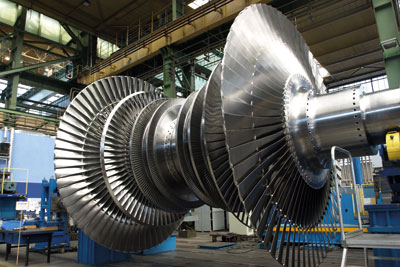
Source:
Strategy of the CAS for the 21
st Century
Research into the efficient conversion of energy from various sources,
the storage of energy from renewable sources, smart energy distribution, the development of
nanomaterials for solar energy conversion, as well as significant modernizations and innovations of
thermal power plants – these are the main tasks in this Strategy AV21 programme.
4. Natural hazards:
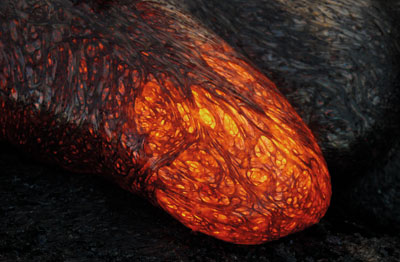
Source:
Strategy of the CAS for the 21
st Century
The aim of this programme is to acquire a more comprehensive
understanding of the complex and hazardous processes in the Earth´s interior, on its surface, in
the atmosphere and in space to help predict and avert such natural hazards as earthquakes,
landslides, floods, geomagnetic storms, as well as soil degradation and erosion, the consequences
of droughts and other such eventualities.
5. New materials based on metals, ceramics and composites:
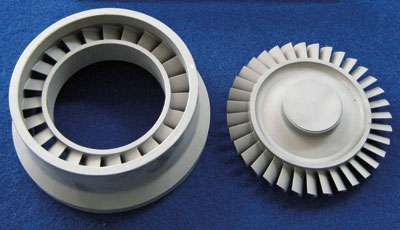
Source:
Strategy of the CAS for the 21
st Century
Basic material research and a thorough understanding of the relations
between the microstructure and behaviour of materials are inevitable for the development of new
materials with special and unique properties, including nanomaterials, advanced high-strength
steels
for cars, high temperature super-alloys for aeronautical engines, life-saving medical
implants, functional materials and composites for many industrial applications.
6. Diagnostic methods and techniques:

Source:
Strategy of the CAS for the 21
st Century
The main objective is to gain new fundamental knowledge in physics,
chemistry and other fields of sciences allowing the further development of special technologies for
extremely precise and technically advanced applications, the advancement of electronics, optics and
the corresponding advanced technologies for materials engineering and non-invasive diagnostic
procedures.
7. Well-being in health and disease:
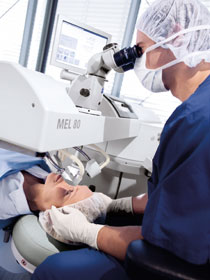
Source:
Strategy of the CAS for the 21
st Century
Multidisciplinary biomedical research is to be conducted with special
emphasis on diseases of modern civilization. The programme aims not only at novel discoveries
concerning the molecular, cellular, systemic and epidemiological basis of these diseases and
natural regenerative mechanisms, but also at developing innovative diagnostic tools, therapies to
treat those diseases and more efficient strategies to prevent them.
8. Foods for the future:
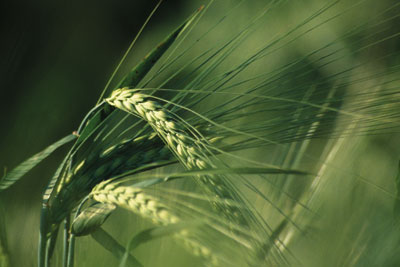
Source:
Strategy of the CAS for the 21
st Century
New ecologically and economically sustainable ways of plant and animal
production are sought using the latest findings in genomics, proteomics and metabolomics, obtaining
new insights into the hereditary information of agricultural crops and farm animals with priority
attention to developing new varieties resistant to diseases, pests and abiotic stress, with
increased yield and quality, to address challenges resulting from climate change, the loss of
arable land and its degradation and erosion.
9. Diversity of life and health of ecosystems:
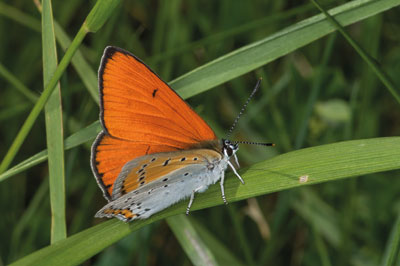
Source:
Strategy of the CAS for the 21
st Century
The programme focuses on the study of biodiversity at the level of
molecules, genes, species, communities and whole ecosystems, on research into fundamental
biogeochemical processes, flows of nutrients and energy among ecosystems in the interest of
preserving biological diversity and protecting natural ecosystems. New findings in this field can
also find their use in agriculture, forestry, fishery, environmental protection and other areas
related to the ecosystem services.
10. Molecules and materials for life:
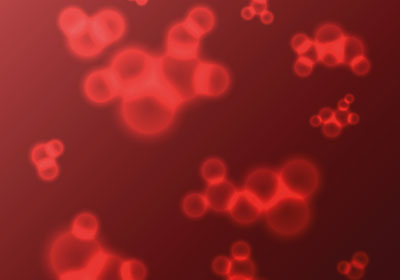
Source:
Strategy of the CAS for the 21
st Century
Priorities of this programme include the development of new and more
efficient chemical technologies useful for environmental protection, including new catalytic
systems decreasing energy consumption. Detailed knowledge of structure-to-function relationships in
polymers
is also expected to bring new, selectively active and targeted drugs, biomaterials supporting
the regeneration of tissues or new tissue formation, as well as devices for selective medical
diagnostics.
11. Europe and the State: between barbarism and civilization:
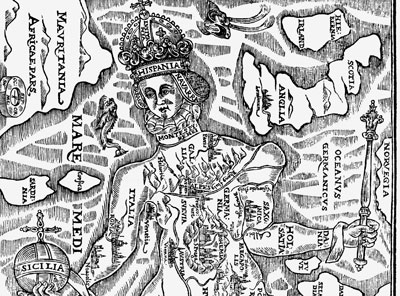
Source:
Strategy of the CAS for the 21
st Century
This programme studies the State as a tool for organizing society, as
a space for both the forming of and the destruction of the processes of civilization. It deals with
the transformations of both historical and contemporary (Central) European states as a phenomenon,
the historical oscillation between the positive and negative forms of an organisation that
sometimes tyrannises society (barbarism) and other times brings it to humanity and culture
(civilization).
12. Memory in the digital age:

Source:
Strategy of the CAS for the 21
st Century
Research into human memory – both individual and collective – as
reflecting complex modern history makes a significant part of studies in many branches of science.
Researchers are therefore to analyse the culture of remembrance, to trace the transformations of
traditional values and social structures on this basis and to develop research infrastructure for
the preservation and analysis of memory.
13. Effective public policies and contemporary society:

Source:
Strategy of the CAS for the 21
st Century
The programme aims to better understand our complex and rapidly changing society in the 21st
century and the dynamics of these changes. Interdisciplinary research projects are to seek answers
to key questions about how present-day society and public policies function, to investigate
socio-economic, philosophical and other factors influencing public policy, to provide insight into
causes underlying numerous societal phenomena.
14. Forms and functions of communication:
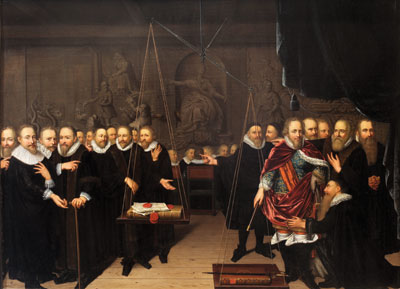
Source:
Strategy of the CAS for the 21
st Century
The social, cultural and psychological functions of communication, the
conditions of understanding among individuals and social groups, communication among different
branches of science on the one hand and between science and society on the other, as well as
historical forms and changes in communication and new ways of its analysis and modelling: these are
the main points of interest of this programme.
The Czech Academy of Sciences in 2015 – science and research
This year sees numerous projects carried out at the CAS institutes out
of which only a few can be mentioned here:
The Institute of Archaeology in Brno is examining different grave pit modifications and
wooden structures in the Great Moravian graves and what they can reveal about the social structure
of early medieval society. The Institute of Geology is to complete its project entitled
Laboratory simulations of space weathering – the role of iron nanoparticles in the reflectance
spectra of asteroids. Geologists from the Institute of Rock Structure and Mechanics are
continuing to co-operate with the underground laboratory at Grimsel in southern Switzerland and to
study, within the framework of the international Large Scale Monitoring Project (LASMO), geological
discontinuities and rock movements in the Alps. Researchers from the Institute of Physics are to
use the prestigious ERC Consolidator Grant and focus on exotic states of new magnetic materials.
The same ERC grant support is to allow the Institute of Molecular Genetics to further investigate
RNA in connection with the search for new antiviral therapy in mammals.
The year 2015 is again rich in international events, including
conferences on
The Present and Future of Institutions of Non-University Research, on computational
neurosciences
CNS 2015, on Frontiers of Quantum and Mesoscopic Thermodynamics –
FMQT´15, on the Strength of Materials (ICSMA 17),
LOGICA 2015 and many others.
Throughout the year, new scientific discoveries are constantly being
announced, including the first borane laser in the world developed by the Institute of Inorganic
Chemistry. The Institute of Organic Chemistry and Biochemistry has gained new findings allowing
more detailed examination of the life-cycle of the HIV viruses; the Algatech Centre of the
Institute of Microbiology and the Biology Centre have published a breakthrough discovery describing
the physical nature of the conversion of light into heat in light-harvesting complexes of plants
and the Institute of Animal Physiology and Genetics has thrown new light upon what causes
disruptions of chromosome division in mammalian eggs.
The Czech Academy of Sciences in 2015 – topical events
125
th Anniversary of the Czech Academy of Sciences

Photo: Stanislava Kyselová, AB
Ceremonial Opening at the Convent of St Agnes in Prague
Throughout the whole of 2015 the CAS is commemorating the 125
th anniversary of the foundation of “The Czech Academy of Emperor Franz Josef I for
Sciences, Literature and Art”, which is the predecessor of today’s CAS. To celebrate the jubilee,
the CAS has prepared a number of ceremonial events, conferences, exhibitions and lectures
throughout 2015. They began with a Ceremonial Session in the main hall of Wallenstein Palace and a
Ceremonial Opening at the Convent of St Agnes in Prague. These were followed, among others, by
Videomapping – a video projection on the walls of the CAS main building on Národní třída in Prague
that acquainted the general public with selected historical milestones of the CAS and its important
scientific personalities.
Those interested could or still can learn more about the CAS and its activities at the
interactive exhibitions Science and Technology:
An Adventure that Will Entertain You! at the National Technical Museum in Prague,
Botanical Stories (World of Plants – From Knowledge to Use) at Průhonice Castle and the
Chotobuz Botanical Garden, at the travelling outdoor exhibition called
ART (and) SCIENCES, and also at the international conference
Non-University Research Institutions in 1890–2015 and through many other events.
Other Anniversaries
Numerous events have also been prepared to commemorate the 70
th anniversary of the end of World War II, such as exhibitions
On the Threshold of Freedom: Victory 1945 and The Protectorate and its End.
600 years ago Czech the priest, philosopher and early Christian
reformer, Jan Hus, was burned at the stake for heresy – and the CAS and its institutes paid homage
to him with lectures, publications, exhibitions and conferences, including an international one
entitled
Hus – Hussite Movement – Tradition – Prague; from Reality to Myth and Back.

Photo: Stanislava Kyselová, Akademický bulletin
From the exhibition Hus – Hussite Movement – Tradition – Prague; from Reality to Myth and
Back
EXPO 2015
The CAS presented its successes at the world EXPO 2015 held in Milano, Italy, under the
banner Feeding the Planet, Energy for Life. The Institute of Organic Chemistry and Biochemistry
presented its research aimed at finding new therapeutics against modern civilization´s – or
lifestyle – diseases. The Institute of Experimental Botany, whose researchers have substantially
contributed to sequencing the wheat genome, offered an insight into the DNA structure of cultivated
crops. On display was also the first electron microscope from the Institute of Scientific
Instruments, the Institute of Botany took part in preparing a live exhibition of plants, the
Laboratory of Silence showing a biotope of a Czech forest.
The International Year of Light
The United Nations has designated 2015 as
The International Year of Light and Light-Based Technologies. The CAS has joined the
efforts to raise global awareness of the social, economic and developmental role of light and
optical technologies and organized exhibitions (including
Light is Life and Light and Shade, which documents that the distribution of, and the
interplay between, light and shade is the substance of paintings), symposia, public lectures and so
on. The topic of light seen from all possible aspects has also been included in the CAS´s largest
event popularizing science –
The Week of Science and Technology 2015.
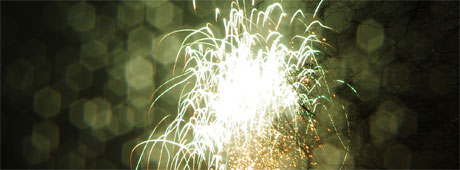
Photo:Jaromír Kopeček, Institute of Physics
Prepared by
Jana Olivová in
Academy bulletin
Contact:
olivova@ssc.cas.cz
20 Oct 2015


 Česky
Česky



